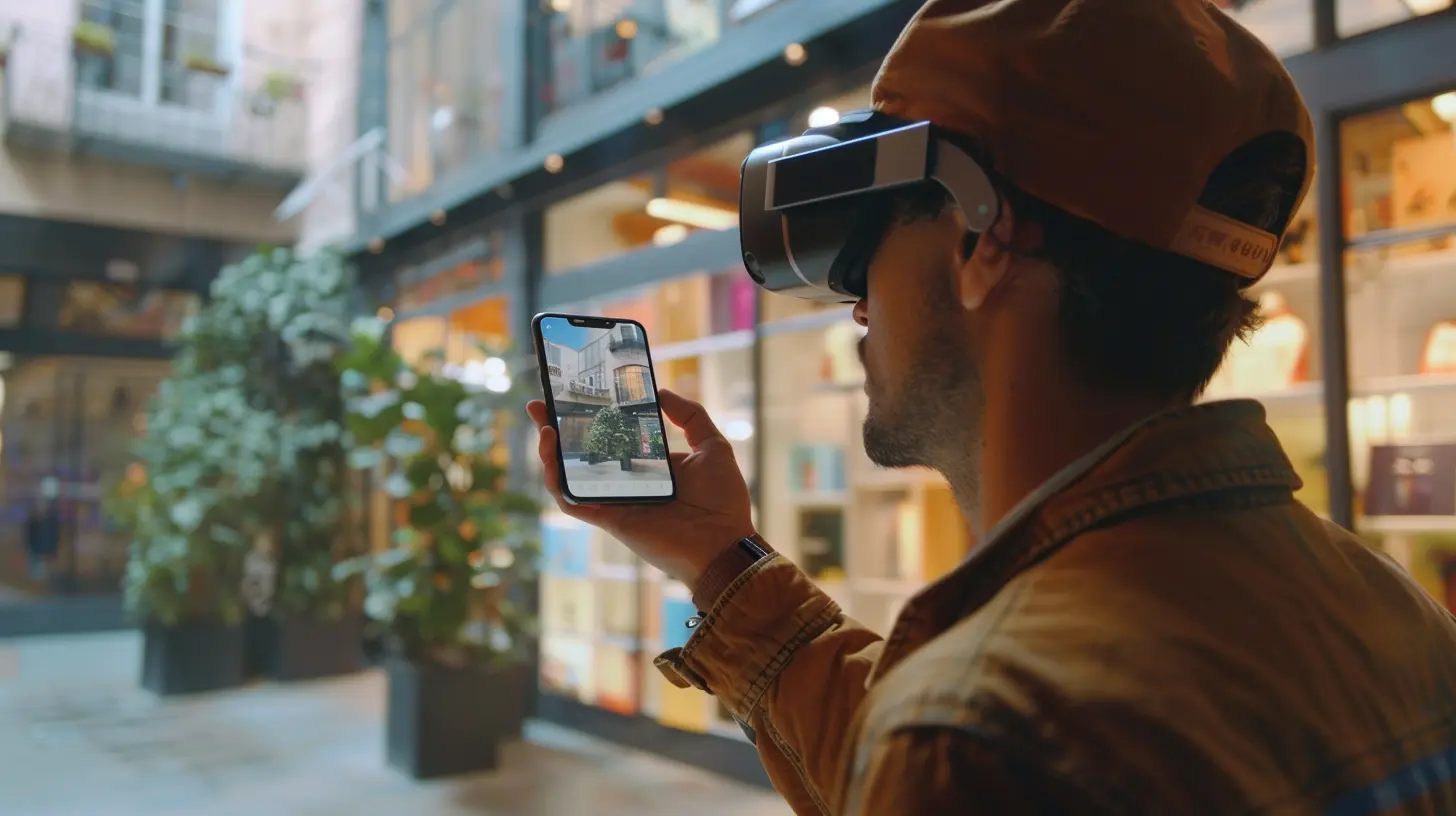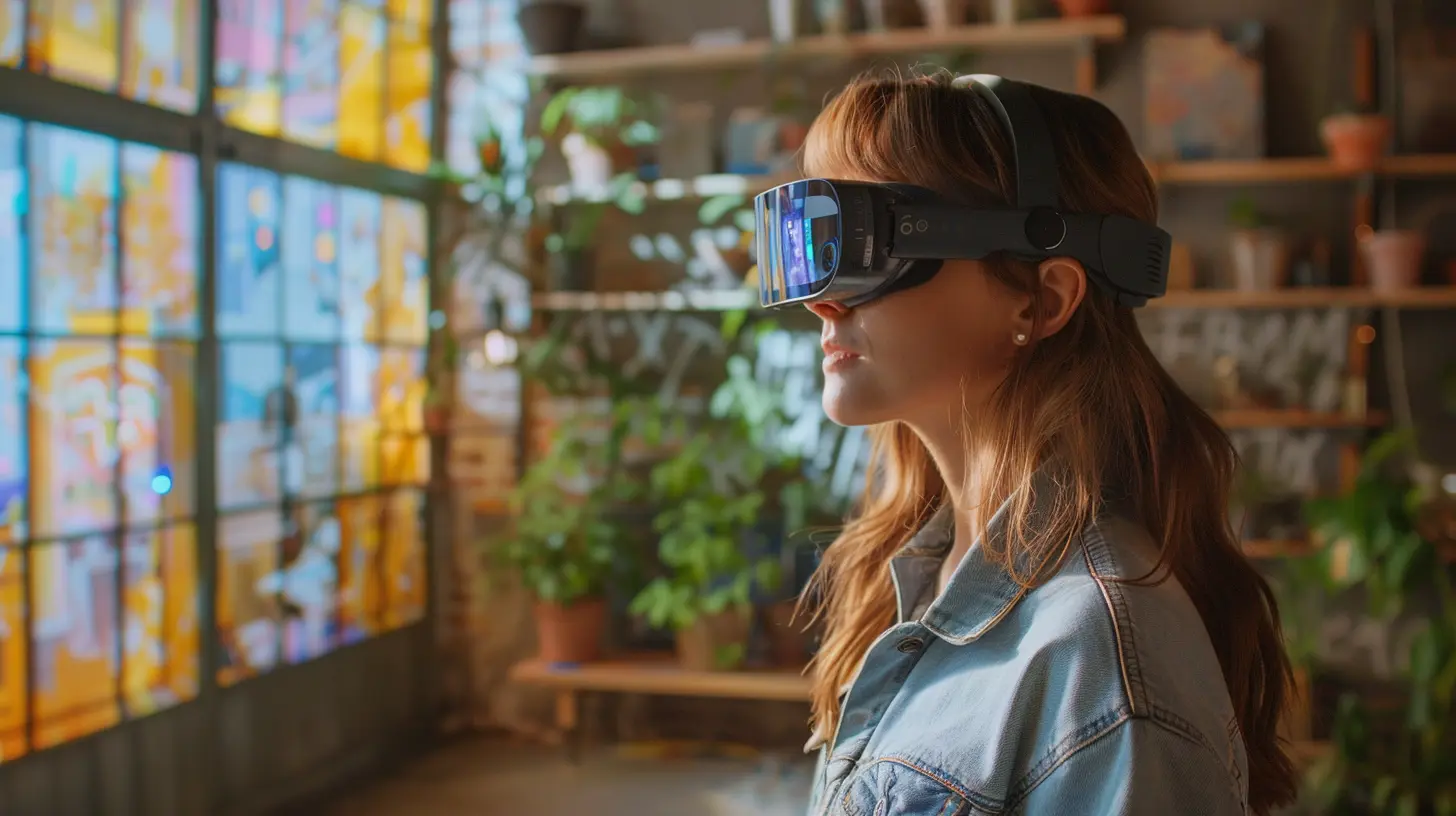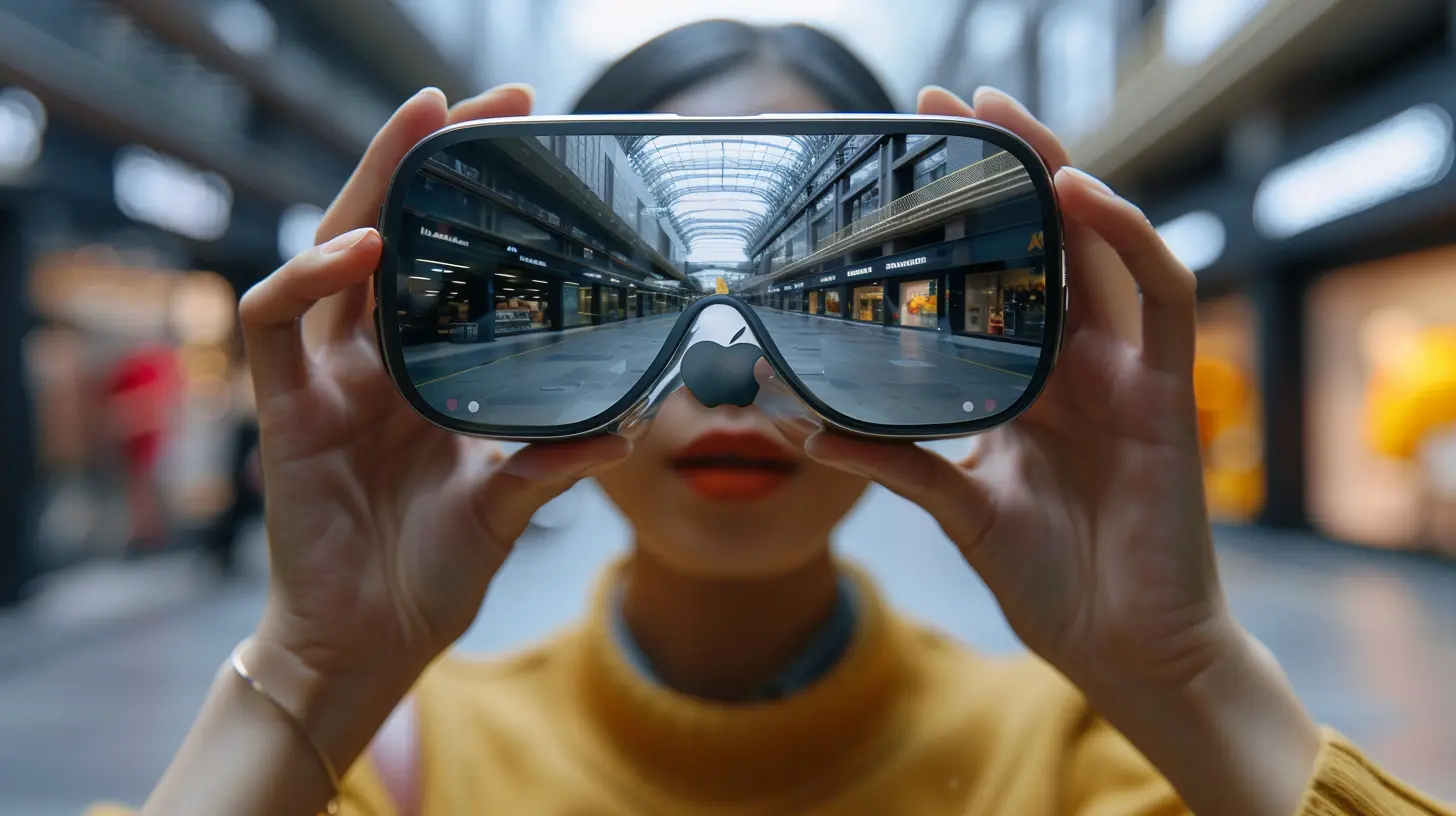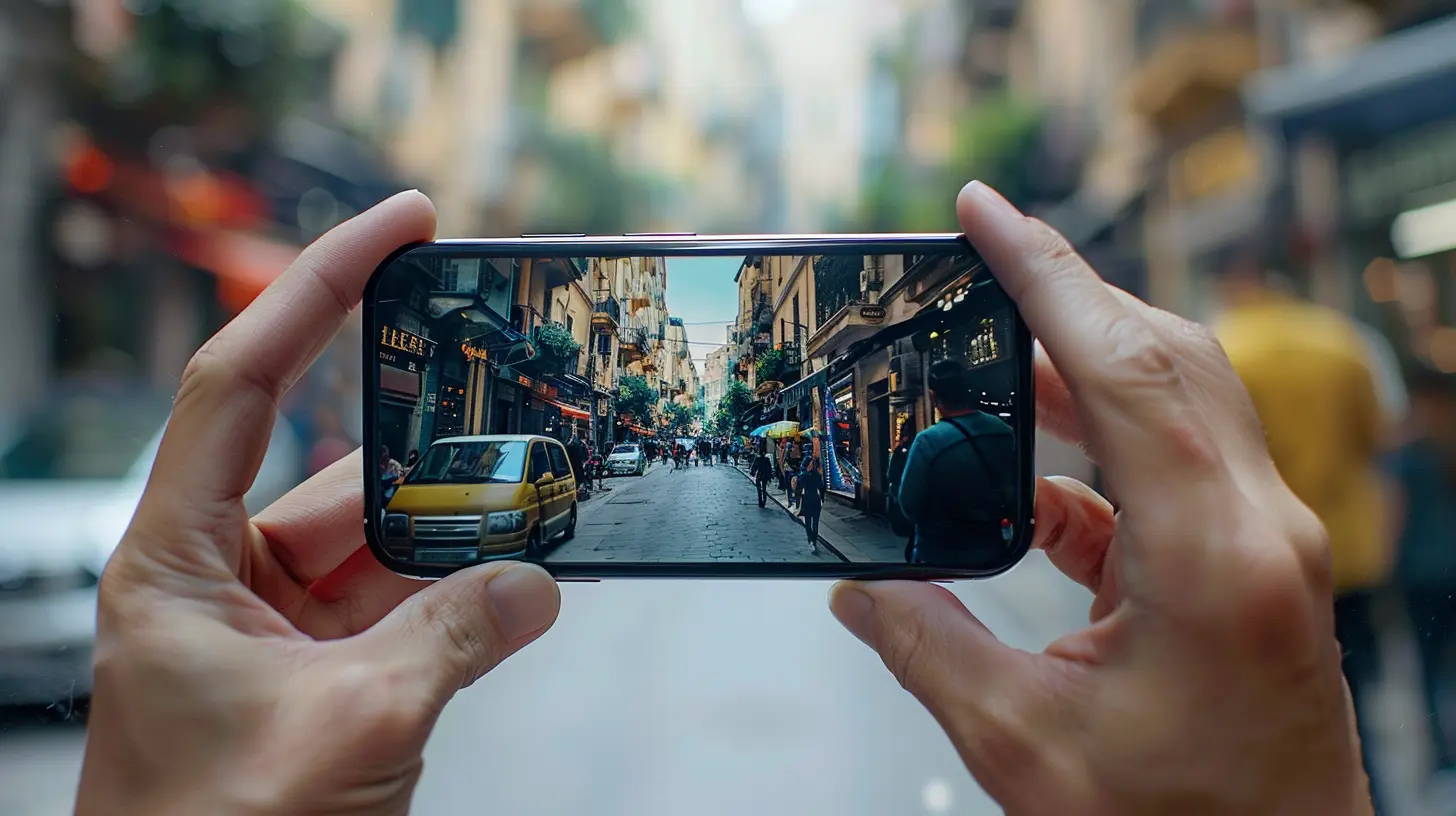Augmented Reality in Marketing: Crafting Immersive Advertising Campaigns
30 April 2025
Remember when advertising was just about catchy slogans and flashy billboards? Well, those days are long gone. In the fast-paced world of marketing, brands are constantly innovating to capture consumer attention, and one of the most exciting tools in their arsenal is Augmented Reality (AR).
AR is no longer just a concept from sci-fi movies — it's real, it's here, and it's transforming how businesses engage with their audience. In this article, we're diving deep into how augmented reality is reshaping marketing strategies and helping brands craft immersive advertising campaigns that leave a lasting impression. Buckle up!

What Exactly is Augmented Reality?
Before we jump into the marketing magic, let’s clear up what augmented reality actually is. In simple terms, AR overlays digital content (like images, sounds, or other sensory enhancements) onto the real world through devices like smartphones, tablets, or AR glasses.Think of it as a digital layer added to your perception of reality. Unlike virtual reality (VR), which takes you into a completely different world, AR enhances your current environment. You've probably seen it in action with apps like Pokémon Go, where digital creatures pop up in your living room or backyard.
But AR isn’t just for games. It's becoming a serious tool for brands looking to create more interactive and engaging marketing experiences. Let’s take a look at how.

How Augmented Reality is Revolutionizing Marketing
1. Enhancing Product Visualization
Ever tried buying furniture online and wondered, "Will this couch fit in my living room?" or "Does that lamp match my décor?" With AR, those questions are a thing of the past. Brands like IKEA have integrated AR features into their apps, allowing customers to visualize products in their own space before making a purchase.This ability to digitally "try before you buy" significantly reduces the guesswork for consumers. It enhances confidence in purchasing decisions, ultimately driving sales. AR bridges the gap between traditional online shopping and physical retail experiences, making it easier for consumers to imagine products in their everyday lives.
2. Creating Immersive Brand Experiences
In today’s competitive market, brand loyalty is more challenging to achieve. AR gives marketers the opportunity to create memorable, immersive experiences that go beyond conventional advertising. Instead of telling consumers about a product, AR helps them experience it firsthand.For example, Pepsi Max launched an AR campaign at a bus stop in London. Commuters waiting for the bus saw UFOs, tigers, and meteors appearing in the street through the AR display. This unexpected and immersive experience left audiences in awe, creating a buzz around the brand. The best part? The campaign went viral, racking up millions of views online, proving that AR can extend beyond physical spaces into the digital world.
3. Gamifying Advertising Campaigns
Let’s face it — we all love games. Incorporating elements of gamification into marketing campaigns has been a proven strategy to engage audiences, and AR takes it to the next level. By turning advertisements into interactive games, brands are able to capture the attention of potential customers in a fun way.A brilliant example is Burger King’s “Burn That Ad” campaign. Users could use their mobile phones to "burn" competitors' ads through AR, revealing a Burger King coupon in its place. Not only was this a creative use of technology, but it also reinforced brand loyalty and drove traffic to their stores.
AR gamification taps into our natural human desire for play, making advertising feel more like entertainment than a sales pitch. And when customers are entertained, they’re more likely to engage with your brand.
4. Personalized and Targeted Marketing
What if you could deliver a unique, personalized ad experience to each customer? AR makes this possible. Brands can now craft tailored advertising experiences that cater to individual preferences, behaviors, and environments.For instance, a cosmetics brand might allow users to upload a selfie and virtually try on different shades of lipstick or eyeshadow. This personalized experience ensures that customers are more likely to find a product they love and are confident in purchasing.
Moreover, AR can be location-based. Imagine walking past a store, and your smartphone buzzes with an AR pop-up ad offering you a discount on a product you were browsing online the previous week. With AR, advertising can feel less intrusive and more like a helpful nudge, making it deeply personal.
5. Boosting User Engagement through Social Media Filters
If you've been on Instagram or Snapchat lately, you've probably noticed those fun filters that turn your face into a cat or let you wear virtual sunglasses. While these might seem like harmless fun, they’re actually a powerful marketing tool.Brands are leveraging AR filters on social platforms to engage users in new and creative ways. For example, Gucci created an AR filter allowing users to try on virtual sneakers. Not only did this drive engagement, but it also generated brand awareness as users shared their customized content with their followers.
These playful interactions don't just spark user engagement — they also provide brands with tons of user-generated content. When consumers interact with AR filters and share their experiences, they essentially become brand advocates, promoting your product to their network without any hard sales pitch.

The Benefits of AR in Marketing
1. Higher Engagement Rates
Let’s be honest — traditional ads can be a bit of a snooze fest. But AR ads? Now, that’s something different. AR experiences are interactive and fun, which naturally leads to higher engagement rates compared to more static forms of advertising.With AR, users are actively participating in the ad rather than passively consuming it. This involvement creates a sense of ownership and connection to the brand, making users far more likely to remember the experience and, by extension, the brand itself.
2. Improved Customer Experience
AR allows brands to provide added value to customers by making their shopping experiences easier, more engaging, and more personalized. Whether it’s previewing a product in your home or trying on virtual clothes, AR ensures that customers have all the information they need to make confident purchase decisions.And let's face it, a happy customer is a loyal customer. By offering a seamless, innovative experience, brands using AR can cultivate stronger relationships with their audience.
3. Increased Conversion Rates
Engaging? Check. Personalized? Check. The result? Higher conversion rates. AR’s ability to create experiences that resonate with consumers has a direct impact on sales. When customers can visualize a product in their environment or try it on virtually, they're more likely to hit that "buy" button.In fact, studies show that AR experiences can increase conversion rates by up to 94%. That’s a pretty staggering statistic, isn’t it? The immersive nature of AR helps eliminate common buying hesitations, leading to more confident and quicker purchasing decisions.
4. Standing Out in a Crowded Market
In a world where consumers are bombarded with thousands of ads daily, standing out is no small feat. AR offers brands a unique opportunity to differentiate themselves from the competition.By adopting AR early, brands can position themselves as innovative and forward-thinking, which is particularly appealing to younger, tech-savvy audiences. Whether it’s through interactive product demos, personalized shopping experiences, or social media filters, AR helps brands cut through the noise.

Challenges of Using AR in Marketing
Of course, it’s not all sunshine and rainbows. While AR offers exciting possibilities, implementing it isn’t without challenges.1. Cost and Development Time
Creating a sophisticated AR experience can be expensive and time-consuming. It requires specialized skills, software, and hardware. For smaller businesses with limited budgets, the cost of developing an AR campaign might be prohibitive.2. User Adoption
Although AR is gaining popularity, not everyone is on board yet. Some consumers might not be familiar with AR technology or may not have the latest devices to fully experience it. This can potentially limit the reach of your campaign.3. Technical Glitches
Like any technology, AR isn’t perfect. Bugs, glitches, or poor-quality graphics can ruin the user experience and reflect poorly on the brand. Ensuring a smooth, flawless AR experience requires rigorous testing and maintenance.The Future of Augmented Reality in Marketing
Despite the challenges, AR in marketing is here to stay. As technology continues to evolve, we can expect AR to become even more accessible and prevalent. In the near future, AR may be integrated into everything from billboards to packaging, giving consumers interactive experiences with everyday products.The key for brands is to stay ahead of the curve. By embracing AR now, businesses can not only capture the attention of today’s consumers but also future-proof their marketing strategies for the next generation of tech-savvy shoppers.
Conclusion
Augmented reality is no longer just a futuristic concept—it’s a game-changer in the world of marketing. From enhancing product visualization to creating personalized, immersive experiences, AR allows brands to connect with consumers in ways that were once unimaginable. Sure, there are challenges to overcome, but the potential rewards far outweigh the risks.So, whether you’re a startup looking to make a splash or an established brand wanting to stay ahead of the curve, it might be time to start thinking about how AR can fit into your marketing strategy. After all, who wouldn’t want to turn their marketing campaign into an unforgettable experience?
all images in this post were generated using AI tools
Category:
Augmented RealityAuthor:

Ugo Coleman
Discussion
rate this article
7 comments
Jacob Clarke
Augmented Reality is revolutionizing the marketing landscape, transforming ordinary campaigns into extraordinary experiences. By harnessing immersive technology, brands can engage consumers like never before, creating memorable interactions that resonate. Embrace this innovative frontier—it's not just advertising; it's a dynamic journey that connects and captivates audiences!
May 13, 2025 at 4:52 AM

Ugo Coleman
Absolutely! Augmented Reality is indeed reshaping marketing, enabling brands to create engaging and unforgettable experiences that resonate deeply with consumers. It's an exciting time for innovative advertising!
Finn Kim
Augmented reality weaves the fabric of dreams, transforming marketing into an immersive, vibrant experience.
May 12, 2025 at 11:06 AM

Ugo Coleman
Thank you! Augmented reality truly revolutionizes marketing by making it more engaging and memorable for consumers.
Roman McKenzie
Augmented Reality transforms marketing by creating immersive experiences that engage consumers on a deeper level. As brands harness this technology, they can drive emotional connections, enhance storytelling, and ultimately foster loyalty. Embracing AR is essential for staying relevant in today’s digital landscape.
May 5, 2025 at 8:18 PM

Ugo Coleman
Thank you for your insights! I completely agree—AR indeed revolutionizes marketing by deepening consumer engagement and fostering brand loyalty. Embracing this technology is crucial for staying competitive in a digital world.
Stacey Simon
Augmented Reality is revolutionizing marketing by creating immersive experiences that engage consumers like never before. This innovative approach transforms traditional advertising into interactive, memorable campaigns that drive results.
May 5, 2025 at 3:10 AM

Ugo Coleman
Thank you for your insightful comment! I completely agree—augmented reality truly enhances consumer engagement, making marketing more interactive and memorable.
Zevon Hughes
Augmented reality breathes life into ads, captivating hearts and minds.
May 2, 2025 at 6:53 PM

Ugo Coleman
Thank you! I'm glad you see the potential of augmented reality in making ads more engaging and impactful.
Rowan Franklin
“Augmented Reality in marketing? Finally, a way to make my shopping experience feel like a video game! Just waiting for the virtual price tags to start dancing.”
May 1, 2025 at 3:31 AM

Ugo Coleman
Absolutely! Augmented reality transforms shopping into an interactive experience, making it both fun and engaging. Stay tuned for more exciting innovations!
Lana Malone
Exciting possibilities for engaging consumer experiences!
April 30, 2025 at 12:07 PM

Ugo Coleman
Thank you! Augmented reality truly opens up innovative ways to connect with consumers and enhance their experiences.
MORE POSTS

The Future of 5G: What It Means for Connectivity and Innovation

The Advancements of Ion Propulsion for Long-Distance Space Missions

Machine Learning in Healthcare: From Diagnosis to Drug Discovery

Augmented Reality on Mobile: What’s Next for AR Apps?

How 5G is Revolutionizing Mobile App Development

Breaking Down the Benefits of Electric Vehicles for City Driving